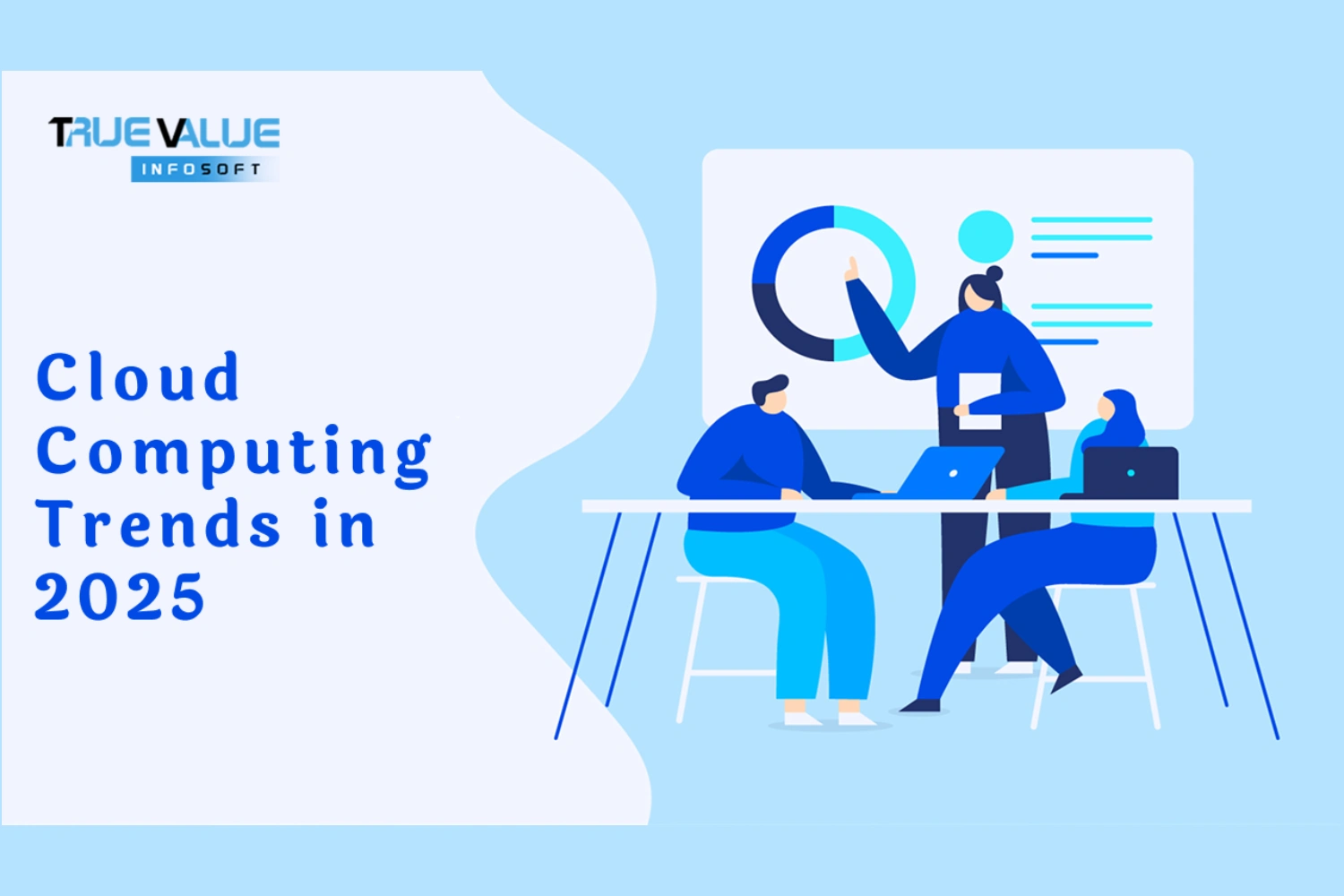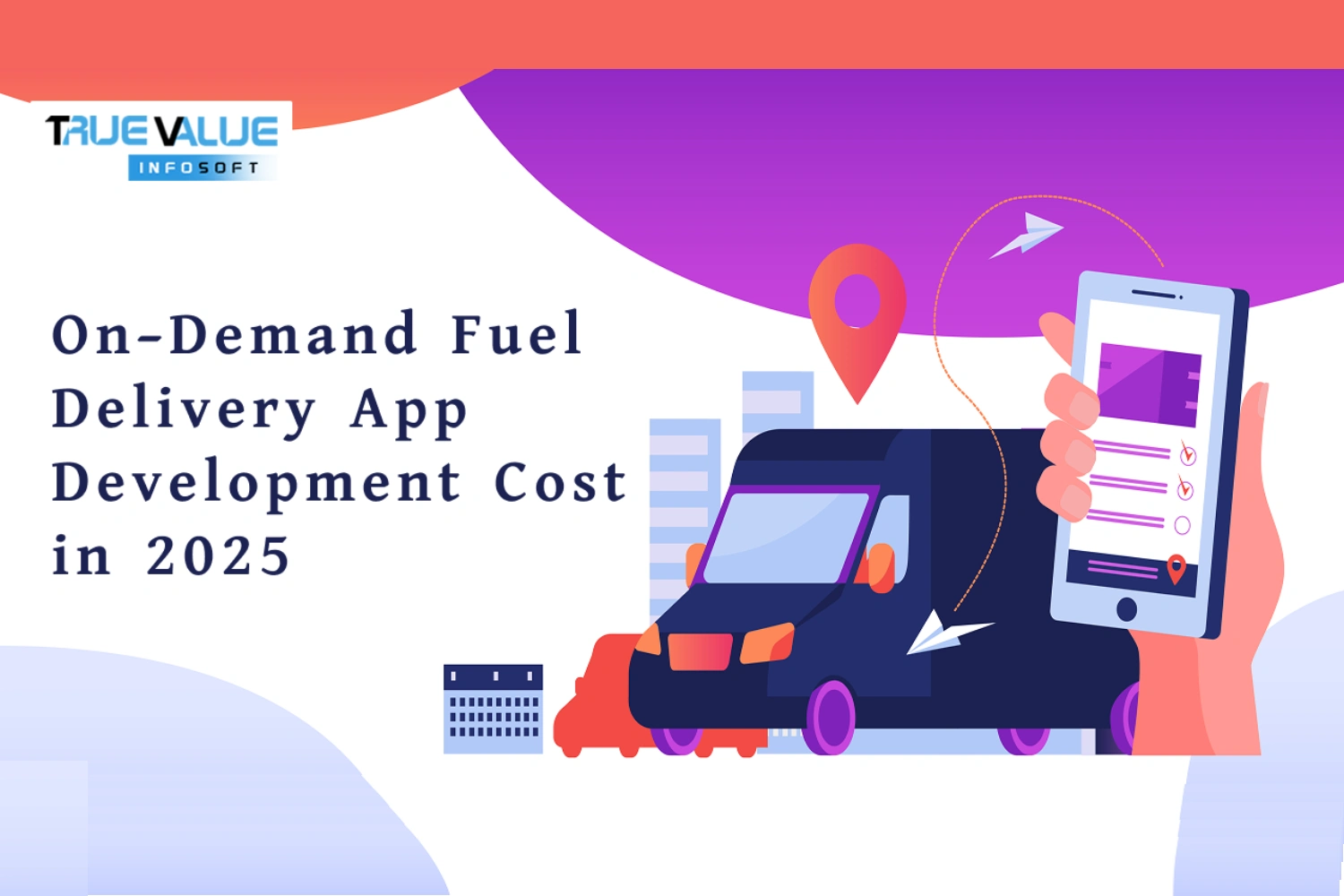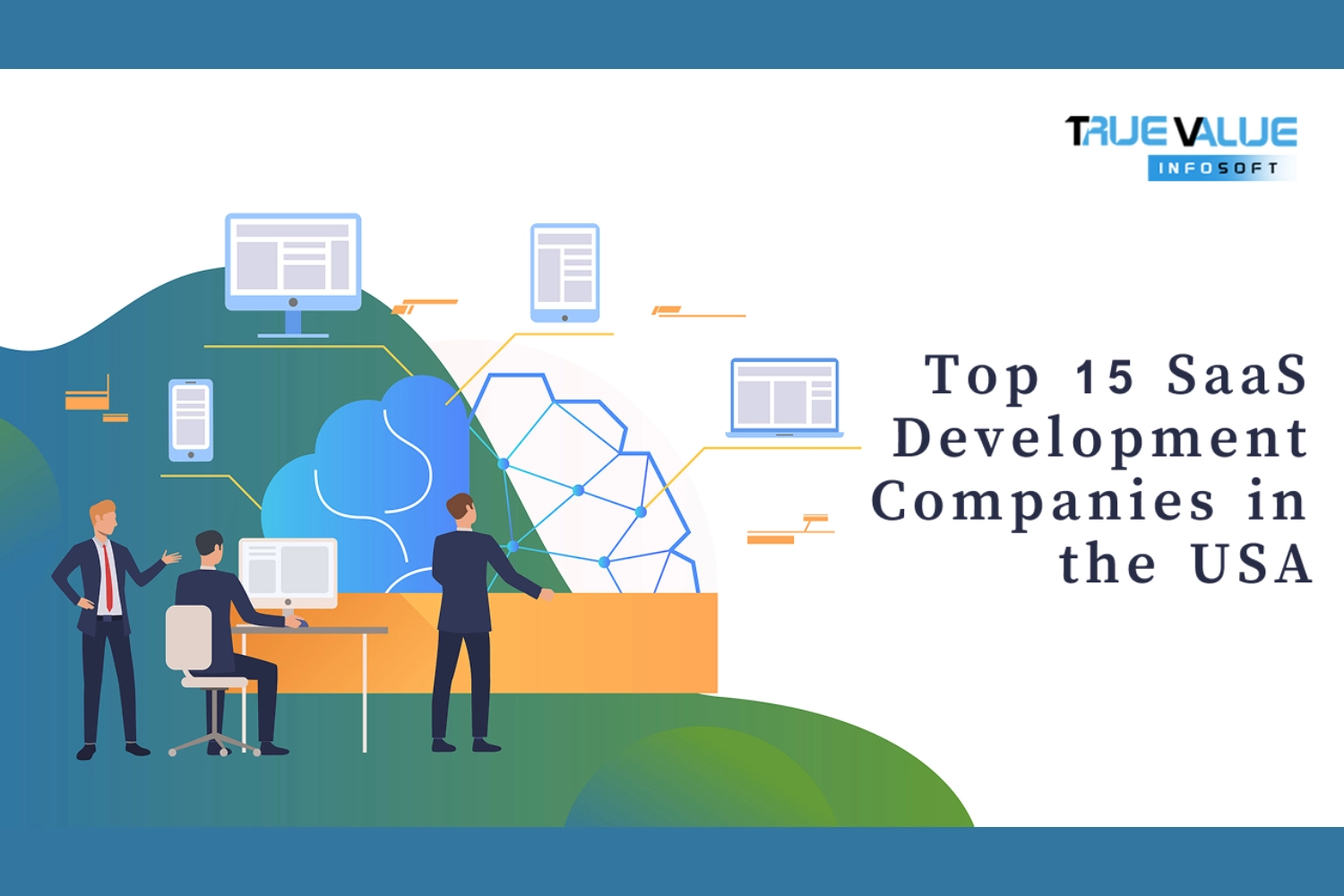Introduction
Have you ever wondered how cloud computing will evolve in the coming years and what it means for your business? As we move into 2025, cloud computing continues to be the backbone of digital transformation, enabling businesses to scale, innovate, and optimize operations efficiently. With advancements in artificial intelligence, edge computing, and hybrid cloud solutions, the future of cloud computing looks more promising than ever.
One company leading the charge in cloud computing solutions is True Value Infosoft, recognized as one of the best IT companies in India. With a strong track record in delivering cutting-edge cloud solutions, True Value Infosoft has helped businesses across industries embrace digital transformation. According to recent industry reports, the global cloud computing market is expected to reach $1 trillion by 2025, with India emerging as a key player in cloud adoption. True Value Infosoft has contributed significantly to this growth, offering tailored cloud solutions that enhance efficiency, security, and scalability.
What is Cloud Computing?
Cloud computing refers to the delivery of computing services—such as storage, processing power, networking, databases, and software—over the internet. Instead of maintaining on-premises infrastructure, businesses can access cloud-based resources on-demand, paying only for what they use. Cloud computing offers several advantages, including cost efficiency, improved collaboration, disaster recovery, and increased accessibility. The three primary cloud service models are:
- Infrastructure as a Service (IaaS): Provides virtualized computing resources over the internet.
- Platform as a Service (PaaS): Offers a development environment to build, test, and deploy applications.
- Software as a Service (SaaS): Delivers software applications via the cloud, eliminating the need for local installations.
Cloud Computing Trends in 2025
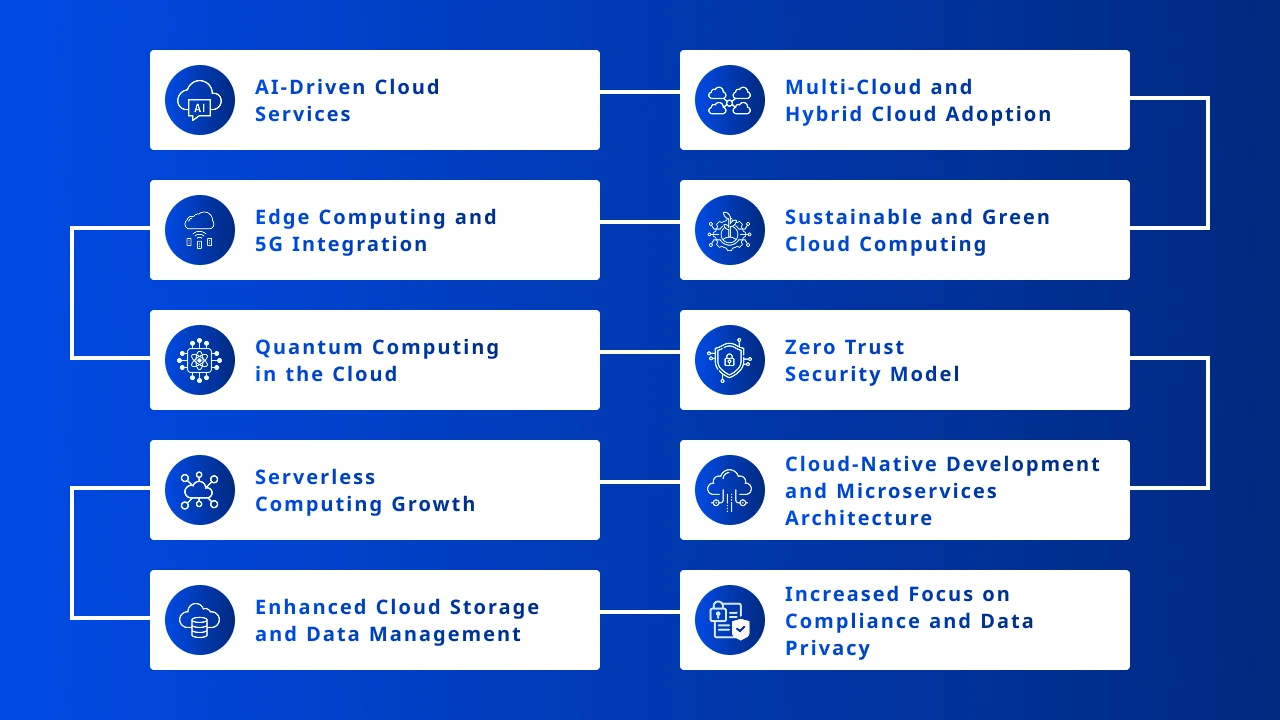
1. AI-Driven Cloud Services
Artificial intelligence (AI) and machine learning (ML) are playing an increasingly significant role in cloud computing. In 2025, cloud providers will integrate AI-powered tools to enhance automation, optimize cloud resource management, and improve cybersecurity. AI-Driven Cloud Services will help businesses derive valuable insights, enabling smarter decision-making.
2. Multi-Cloud and Hybrid Cloud Adoption
Organizations are moving towards multi-cloud and hybrid cloud strategies to enhance flexibility and reduce dependency on a single cloud provider. Businesses will utilize a mix of private, public, and on-premises cloud environments to achieve greater redundancy, performance, and security.
3. Edge Computing and 5G Integration
With the expansion of 5G networks, edge computing is gaining prominence. Edge computing brings computation closer to data sources, reducing latency and improving performance. In 2025, businesses will increasingly adopt edge computing for real-time applications, such as autonomous vehicles, IoT devices, and smart cities.
4. Sustainable and Green Cloud Computing
Sustainability will be a critical focus in cloud computing. Cloud providers will adopt energy-efficient infrastructure and carbon-neutral operations to minimize their environmental impact. Businesses will prioritize cloud vendors that align with sustainability goals, leveraging green computing solutions to reduce carbon footprints.
5. Quantum Computing in the Cloud
Quantum computing is expected to make significant strides in 2025. Cloud providers will offer quantum computing as a service (QCaaS), allowing businesses to leverage quantum capabilities for complex problem-solving, cryptography, and scientific research.
6. Zero Trust Security Model
Cybersecurity threats continue to evolve, necessitating stronger security frameworks. The Zero Trust security model will become a standard in cloud computing, ensuring continuous authentication, authorization, and monitoring of users and devices accessing cloud resources.
7. Serverless Computing Growth
Serverless computing will gain further traction, enabling businesses to run applications without managing infrastructure. This trend will reduce operational costs and improve scalability, allowing developers to focus solely on writing code while cloud providers handle resource allocation.
8. Cloud-Native Development and Microservices Architecture
Cloud-native applications and microservices will dominate software development in 2025. Businesses will shift towards containerized applications using Kubernetes and Docker, improving scalability, deployment efficiency, and resilience.
9. Enhanced Cloud Storage and Data Management
The exponential growth of data will drive demand for advanced cloud storage solutions. AI-powered data management, automated backups, and intelligent tiered storage will help businesses efficiently handle large datasets while ensuring compliance with data regulations.
10. Increased Focus on Compliance and Data Privacy
Regulatory compliance and data privacy will be a top priority in cloud computing. Businesses must comply with evolving regulations, such as GDPR, CCPA, and industry-specific compliance frameworks, to avoid legal and financial risks.
Several key factors are shaping the trends in cloud computing

1. Artificial Intelligence (AI) Integration
The increasing integration of AI into cloud services is enhancing data analysis, automation, and personalized user experiences.
2. Edge Computing Expansion
To meet the demands for low-latency processing and real-time data analysis, edge computing is gaining prominence.
3. Multi-Cloud Strategies
Organizations are increasingly adopting multi-cloud approaches, utilizing services from multiple cloud providers to avoid vendor lock-in, optimize costs, and enhance resilience.
4. Enhanced Cybersecurity Measures
With the rise in cyber threats, robust security protocols are paramount. Cloud providers are investing in advanced security measures, including zero-trust architectures and AI-driven threat detection, to protect sensitive data and maintain trust.
5. Regulatory Compliance and Data Sovereignty
Providers are establishing localized data centers to comply with regional laws, ensuring data residency and sovereignty requirements are met.
6. Serverless Computing Adoption
Serverless computing is gaining traction, enabling developers to focus on code without managing underlying infrastructure.
7. Sustainability Initiatives
Environmental concerns are driving cloud providers to adopt sustainable practices.
8. 5G Network Deployment
The widespread rollout of 5G networks is enhancing cloud capabilities by providing faster and more reliable connectivity.
9. Hybrid Cloud Solutions
Businesses are increasingly implementing hybrid cloud models, combining private and public clouds to balance control, security, and scalability. This approach offers flexibility in workload management and optimizes resource utilization.
10. AI's Influence on Cloud Competition
The integration of AI is significantly impacting cloud service offerings and competition.
These factors collectively influence the evolution of cloud computing, driving innovations and shaping how organizations deploy and manage cloud services in 2025.
Case Study: Cloud Transformation in a Leading Enterprise
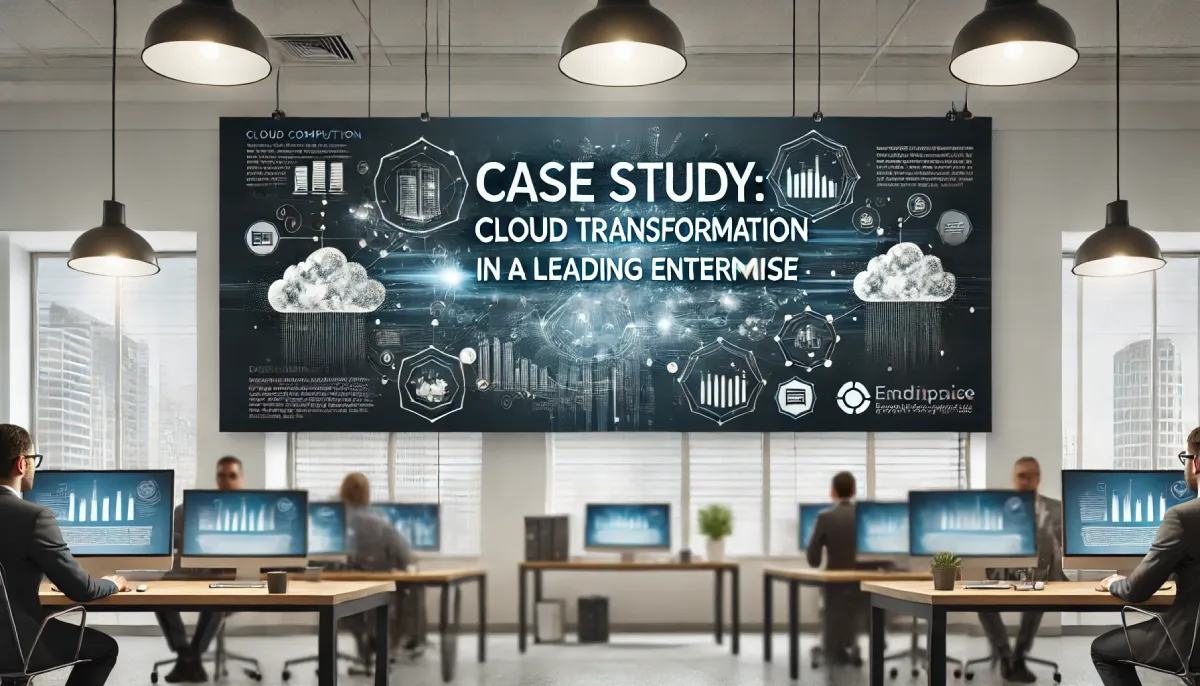
- Company: XYZ Corporation (a global e-commerce company)
- Challenge: XYZ Corporation faced scalability issues, high infrastructure costs, and security concerns with its on-premises data centers.
- Solution: The company migrated to a hybrid cloud strategy, leveraging AWS, Azure, and Google Cloud for different workloads. It adopted AI-driven cloud automation, implemented Zero Trust security, and integrated edge computing for real-time analytics.
Results
- Reduced infrastructure costs by 40%
- Improved application performance with edge computing
- Strengthened security with AI-based threat detection
- Achieved regulatory compliance with GDPR and CCPA standards
Conclusion
Cloud computing will continue to evolve in 2025, driven by AI, edge computing, sustainability, and security advancements. Businesses must adapt to these trends by adopting flexible, scalable, and secure cloud strategies. By leveraging AI-driven automation, hybrid cloud solutions, and Zero Trust security, organizations can optimize operations and stay ahead in a competitive digital landscape. The future of cloud computing is dynamic, and businesses that embrace innovation will thrive in the coming years.
FAQs
AI will improve cloud computing by automating resource management, optimizing workload distribution, enhancing security with AI-driven threat detection, and enabling smarter analytics for businesses.
AI-powered automation will streamline IT operations, reduce manual intervention, and improve efficiency by predicting system failures, automating software updates, and managing cloud resources dynamically.
Yes, AI-driven security measures will enhance threat detection, identify unusual patterns, prevent data breaches, and enable real-time response to cyber threats, making cloud environments more secure.
AI will help businesses optimize cloud spending by predicting usage patterns, recommending cost-saving strategies, and automating resource allocation to reduce unnecessary expenses.
Major trends include AI-driven cloud automation, edge AI for faster processing, AI-enhanced cloud security, intelligent data analytics, and the rise of AI-as-a-Service (AIaaS) for businesses.
